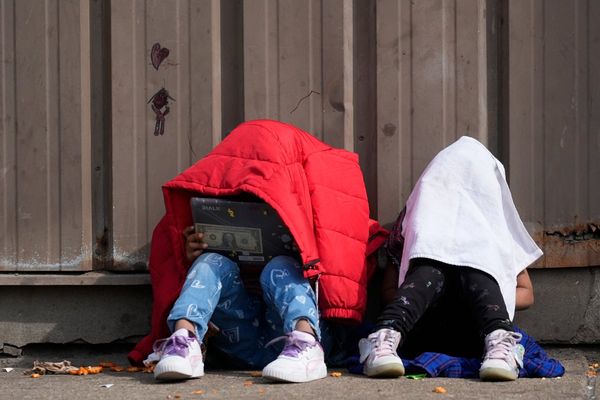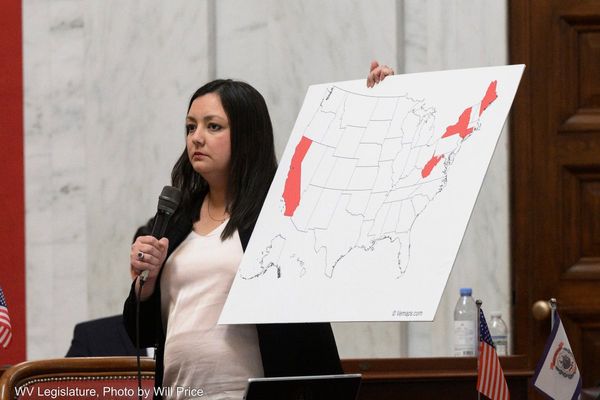
When research was released last week showing the level of body image distress among young people, its focal point was social media: what was driving 75% of 12-year-olds to “dislike their bodies” and feel “embarrassed by the way they look”? Why was this rising to an astounding 80% of young people by the time they reached 18? Is Instagram wrecking mental health, or is it TikTok?
Others argued that social media may be the gravity, but something more immediate had caused the crash. The rise in acute psychological distress – far higher in girls than boys – is observed in a study comparing 2021 with 2007: suicidal ideation among one in 10 girls aged 16, self-harm at almost a quarter. Lockdowns and long Covid were hypothetical factors. Among young non-binary people, the rates are even worse: 61% had self-harmed and 35% had attempted suicide. This may have its more proximal cause in the relentless campaign against them in rightwing politics and some parts of the media.
We could say with relative confidence that social media and more general turmoil are acting as accelerants, and also that going from childhood to adulthood has never been easy. But we won’t get to the root of the particular body disgust that girls experience until we admit the conditions they’re swimming in. They were not invented by Mark Zuckerberg, and blaming a timeless patriarchy is too general.
The over-riding message to young girls from the mainstream – advertising, agony aunts, teachers, parents, the acceptable face of their peers as represented in culture – is a set of platitudes about body positivity: come as you are, love your body, love yourself, don’t fixate “unhealthily” but don’t eat unhealthily either. It was distilled by the Dove Real Women ad campaign of the early 2000s, aimed at “building confidence among girls and young women” – a worthy agenda endorsed by right-thinking people everywhere. It has actually been the theme for as long as I can remember, though it has shape-shifted over time through various hero foods (fibre in the 80s, protein in the 90s, seeds and husks in the 00s etc), acceptable body shapes (zaftig to curvaceous to strong) and buzzwords (“body positivity” to the current term, “body neutrality’”: see your body as a vehicle for your own wellbeing and joy). There’s nothing intrinsically wrong with any of these ideas, except that they’re a lie.
It is impossible to overstate the amount of social approbation you get for being thin. People are moved to comment on it, constantly, and all of those comments are approving, even the ones that explicitly disapprove (it was a running joke in the 90s that the highest possible compliment was “you look a little bit too thin”). It goes beyond remarks, too – you get invited to things for no reason, taken more seriously, your problems accorded more dignity. There is a countervailing, equally intense disapprobation for being fat, the only difference being that people don’t say it out loud. You’ll feel it loud enough, though: you’re not invited to things for no reason, not hired, your problems not taken seriously. Indeed, in circular fashion, the message is often that if you weren’t so fat, you wouldn’t have these problems in the first place, as if being obese means you are no longer the legitimate site of any problem other than your weight.
Obesity is treated as though it represents something very simple, a lack of control around food. In fact, it has psychological and emotional components that are complex and overwhelming and, moreover, have fascinated feminist and psychoanalytical theorists for years. This work is simply never funded or amplified because it doesn’t fit the narrative: that excess weight is the visible proof of a whole raft of traits, most of them negative (laziness, ignorance) or unserious (jollity, bubbliness).
So you have this tripod effect: the explicit message to girls is “don’t try to be thin, try to be healthy”; the implicit message is “thin is actually better than beautiful, thin is beauty, femininity and discipline combined”; and finally the high-pitched screaming of our collective lizard brain: “Fat is disgusting and undignified.” Telling girls not to worry about their body shape is like telling them not to worry about being liked.
I’ve thought about this for years, on my own account and now in relation to my teenagers, and I don’t think tackling our self-loathing is a matter for individual resilience or self-belief. It’s essentially a function of capitalism. At its most mechanistic, you create panic around cellulite, you sell more tights. Anxious around chubby cheeks? You can flog buccal fat extraction surgery. Anything innate to humans that you can make into a problem will create a market for the solution. More fundamentally, mass markets rely on homogeneity, the Fordist formula, any-shape-so-long-as-it’s-thin. You can’t really monetise desire unless everyone’s desires are the same, so you have to create quite a narrow physical ideal. Fashion, with its quest for the new, might periodically announce a reboot – one season it might be all about the butt implant – but it always defaults back to “thin”. And the underlying problem remains the same regardless: it is a human impossibility for us all to be the same shape.
For the reason it focuses on girls more than boys (though boys are by no means immune), you probably have to go back to 80s feminist analysis: the world likes us better when we take up less space. It’s a mistake, made constantly, to characterise girls and young women as “vulnerable”. They don’t struggle with their body image and mental health because they’re fragile or weak. It’s an absolutely rational response to a world that hysterically, ceaselessly bombards them with contradictory demands. I don’t have a better answer to all this than “anarcho-feminism”.
• Zoe Williams is a Guardian columnist







